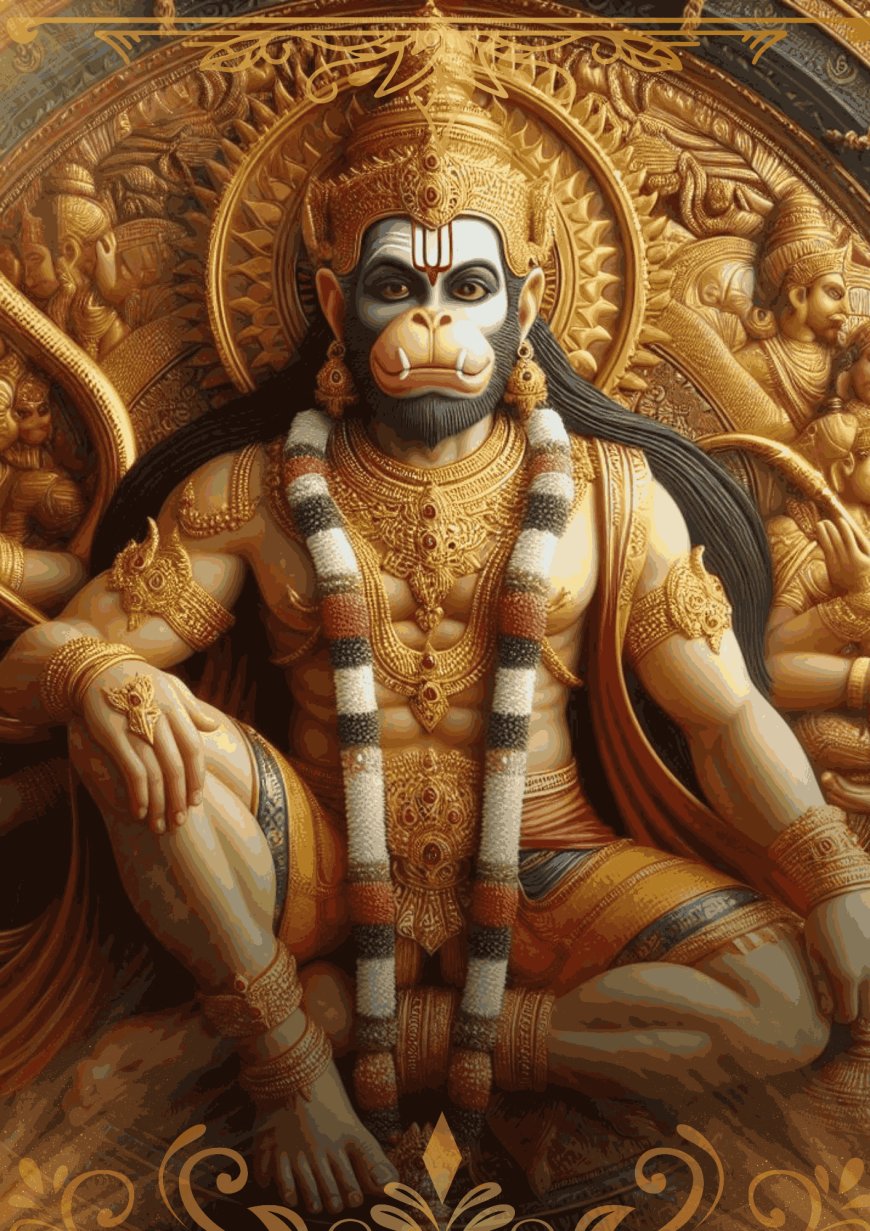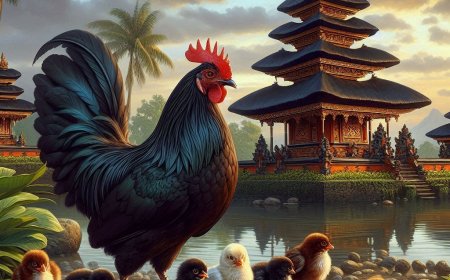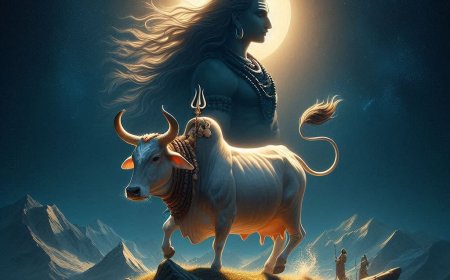Hanuman: The White Monkey Incarnation of Shiva, The Savior Of Darkness.
The story of Hanuman depicts a White Monkey who dedicates his life to goodness. His loyalty to Rama and his determination to fight against darkness teach us the true meaning of devotion. Hanuman symbolizes the blend of physical strength and spirituality, possessing extraordinary abilities.

Hanuman is the main character in the epic Ramayana and is often regarded as an avatar of Lord Shiva in some Hindu traditions. He is depicted as a white monkey and is the son of the deity Vayu and Anjani. Hanuman is known as a great warrior, a powerful white monkey or vanara, characterized by bravery, politeness, combat skills, constant vigilance, proficiency in music and speech, humility, steadfastness in principles, as well as extraordinary strength, resilience, and unwavering loyalty.
Hanuman was born in the Treta Yuga as the child of Anjani, a monkey woman. Previously, Anjani was a celestial nymph known as Punjikastala. Due to a curse, she was born into the world as a monkey woman. Goddess Anjani, the daughter of Sage Gotama, was cursed to become a white monkey after competing for a divine weapon with her two brothers, Guarsa and Guarsi, who later transformed into the monkeys Subali and Sugriva. The curse would be lifted when Anjani gave birth to a son who was an incarnation of the deity Shiva.
On the other hand, Deity Vayu, also known as Deity Angkara, is the god of wind and air. In Hindu tradition, Deity Vayu is one of the Trimurti, the three principal deities. He is renowned for his significant power and influence both in the world and in the heavens. Deity Vayu possesses special powers and abilities, and Hanuman inherits the strength and characteristics of Deity Vayu.
Anjani is known as a holy woman who is very devout and dedicated to the worship of deities, especially Lord Shiva. After receiving a curse, Anjani deeply longed for a great and powerful child. She worshiped Lord Shiva with earnest devotion and perseverance, praying to be blessed with a child endowed with extraordinary strength and high spiritual qualities.
Responding to Anjani’s sincere prayers, Lord Shiva agreed to bless her. Lord Shiva then sent his embryo into Anjani’s womb through the intermediary of Deity Angkara. At that time, Deity Vayu was also involved, and the embryo began to develop within Anjani. During the pregnancy, Anjani experienced various miraculous events and gained superhuman strength. Hanuman, also known as Maruti, grew in his mother’s womb with extraordinary power due to the blessings of various deities. By the time he was born, Hanuman already exhibited impressive abilities and a strong appearance.
When Hanuman was still a child, he mistook the Sun for a fruit that could be eaten and flew towards it with the intention of consuming it. Lord Indra then intervened and struck Hanuman with a thunderbolt. As a result, Deity Vayu was enraged because his son was harmed. The gods then pleaded with Deity Vayu to calm his anger and bestow a blessing upon Hanuman, making him invulnerable to all weapons and granting him the condition that he would only die if he himself wished it. Thus, Hanuman became an immortal being, or Ciranjiwin, and continued his education with his father, Deity Vayu.
After completing his education, Hanuman returned to the world and served his uncle, Sugriva, who was the king of the monkeys in the Kishkindha Cave. At that time, Sugriva had just been defeated by his brother, Vali, who was also Hanuman’s uncle. When Sugriva saw Rama and Lakshmana arriving at Kishkindha, he felt anxious and feared that they were messengers of Vali sent to kill him. Sugriva then asked Hanuman to investigate the purpose of their arrival.
Hanuman accepted the task and disguised himself as a Brahmin to approach Rama and Lakshmana. Rama and Lakshmana were impressed by Hanuman’s demeanor. They then conversed openly, sharing their respective backgrounds with each other. Rama also expressed his desire to meet Sugriva. Once Hanuman was convinced that Rama and Lakshmana were not a threat, he returned to his original form and escorted them to meet Sugriva.
In the mission to help Rama search for Sita, Sugriva sent his vanara army to explore every corner of the earth in order to find clues about Sita’s whereabouts and bring her to Rama if possible. They then got lost and discovered a magnificent city within a cave. Hanuman met Swayamprabha and explained the details of their journey to her. With Swayamprabha’s extraordinary powers, Hanuman and the other vanaras were suddenly transported to the shore in the blink of an eye.
Hanuman and the monkey army arrived at the beach (Source: Personal Collection)
On the shore, Hanuman and the other vanaras encountered Sampati, a giant wingless bird sitting alone, waiting to eat the carcasses of animals. Anggada then detailed the story and requested Sampati’s assistance. Based on Sampati's information, the vanaras learned that Sita was being held in a palace in the kingdom of Alengka, ruled by the demon king Ravana. After receiving this information, the vanaras thanked Sampati and began planning how to reach Alengka.
At the urging of the vanaras, Hanuman remembered his abilities and flew across the ocean to Lanka. Upon arriving, he disguised himself as a small monkey to search for Sita. Hanuman went to Ravana’s palace and observed many countless beautiful women, but he did not find Sita, who was in distress. After inspecting various places, he saw a woman who looked sad and despondent in the garden, whom he believed to be Sita.
Ravana tried to approach Sita (Source: Personal Collection)
Then, Hanuman saw Ravana attempting to seduce Sita. After failing in his advances and leaving Sita, Hanuman approached her and explained the purpose of his visit. Initially, Sita was suspicious, but her doubts disappeared when Hanuman showed her Rama’s ring. Hanuman also assured her that help would arrive soon. He suggested that Sita fly with him to Rama, but Sita declined. She hoped that Rama, as a true warrior, would come to rescue her directly in Lanka. After that, Hanuman asked for permission and took his leave from Sita.
Before returning, he vandalized the Ashoka garden in Ravana's palace, killing thousands of soldiers, including Ravana's elite warriors such as Jambumali and Aksha. Hanuman was captured by Indrajit, Ravana’s eldest son and the heir to the throne of Lanka, using the Brahma Astra weapon. The weapon bound Hanuman's body, but the power of the Brahma Astra diminished when the giant soldiers added ropes to it. Indrajit was enraged and disappointed because the Brahma Astra could be released at any time, yet Hanuman waited for the right moment to react.
As Rahwana was about to sentence Hanuman to death, Wibisana, Rahwana's brother, defended Hanuman by arguing that he was a messenger and thus should receive a lighter punishment. Rahwana then decided to burn Hanuman’s tail as his punishment. Witnessing this, Sita prayed for the flames burning Hanuman’s tail to become cool. Sita’s prayer to Lord Agni was answered, and the fire burning Hanuman’s tail turned cool. With this condition, Hanuman rebelled and managed to free himself from the Brahma Astra bindings.
With his tail blazing like a torch, Hanuman set the city of Alengka on fire, turning it into a sea of flames. After causing a massive blaze, he jumped into the ocean to extinguish the fire on his tail. The inhabitants of heaven praised Hanoman's bravery and declared that, except for Sita's residence, the city of Alengka had been consumed by the flames.
Hanuman meditated at the mountain peak (Source: Personal Collection)
Bringing good news, Hanuman approached Rama and reported on Sita's condition. Subsequently, Rama prepared the monkey army to attack Alengka. After the great battle against Rahwana concluded, Rama intended to reward Hanuman. However, Hanuman declined, as he only wished for Sri Rama to reside in his heart. Rama understood Hanuman's intention and remained spiritually present within him. Eventually, Hanuman went to meditate on the mountaintop, offering prayers for the safety of the world.






























































